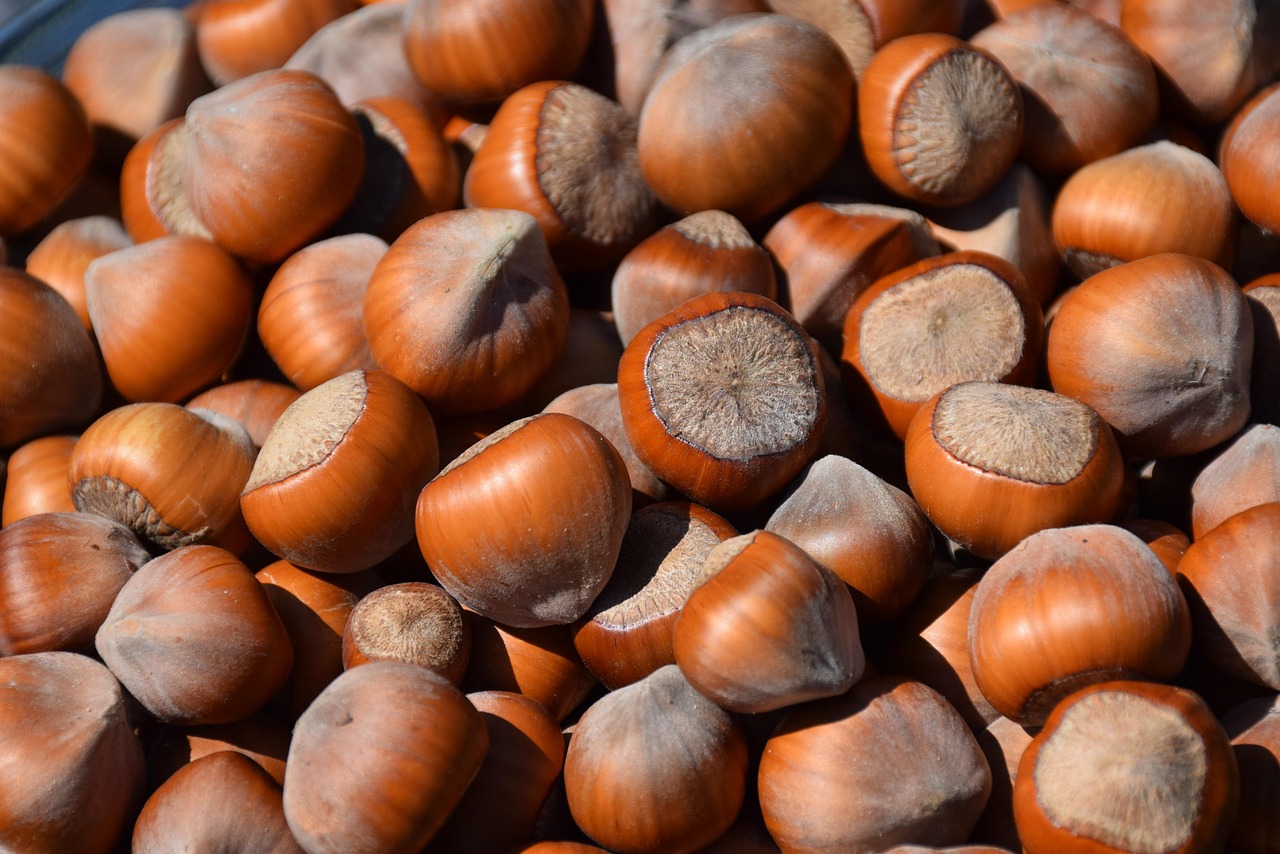Trees are remarkable organisms that play vital roles in our ecosystem. Among their many features, the long seed pods produced by certain tree species capture our attention with their unique shapes and sizes. These curious capsules not only serve a purpose in reproduction but also add visual interest to the landscape. Understanding these fascinating structures can deepen our appreciation for nature’s diversity.
Seed pods come in various forms, each adapted to the specific needs of the tree species. Long seed pods are particularly intriguing due to their elongated shapes and often surprising contents. They can vary widely in length, texture, and color, depending on the species of tree they originate from. When these pods mature, they release seeds that can travel great distances, ensuring the continuation of the species.

Some trees produce very distinctive long seed pods that have become iconic within their native habitats. For example, the well-known red oak has acorns, while the honey locust tree is famous for its long, flat pods. These pods not only serve as a method of seed dispersal but also provide food for various wildlife. Animals such as birds and squirrels often rely on these seeds for nutrition.
| Tree Species | Pod Length | Pod Characteristics |
|---|---|---|
| Honey Locust (Gleditsia triacanthos) | Up to 30 cm (12 inches) | Flat and twisted, contains sweet pulp |
| Black Locust (Robinia pseudoacacia) | 5-10 cm (2-4 inches) | Thin and cylindrical, brownish color |
| Albizia (Albizia julibrissin) | 10-20 cm (4-8 inches) | Slightly curved, silky texture |
| Carob Tree (Ceratonia siliqua) | 15-30 cm (6-12 inches) | Thick and leathery, edible pulp |
Types of Trees That Produce Long Seed Pods
Several tree species are notable for their long seed pods. Each type has evolved to meet its environment’s challenges, ensuring survival through effective seed dispersal methods. Here are a few examples of trees with long seed pods:
- Honey Locust: Known for its long, flat seed pods that twist and curl, the honey locust’s pods are sweet and have been used as a food source by both humans and wildlife.
- Black Locust: This tree produces elongated pods that house seeds in a cylindrical shape. The pods turn brown as they mature and fall from the tree.
- Albizia: Commonly referred to as the silk tree, Albizia has long, slender pods that are covered with silky hairs. These pods contribute to the tree’s unique aesthetic.
- Carob Tree: The carob tree’s long, leathery pods are famous for their sweet pulp. This pulp is often used as a chocolate substitute in various recipes.
The diversity among these trees with long seed pods is remarkable. Each pod serves specific ecological functions while providing food and habitat for various species. By studying these trees and their unique adaptations, we can gain insights into the intricate relationships within ecosystems.
This exploration into trees with long seed pods not only highlights their fascinating features but also encourages us to appreciate the biodiversity around us. Understanding these natural structures can lead to greater awareness and conservation efforts aimed at protecting our planet’s rich flora.
The Importance of Long Seed Pods in Nature
Long seed pods play a crucial role in the reproductive strategies of trees. They facilitate the dispersal of seeds, thereby ensuring the survival of the species. The design and characteristics of these pods are often adapted to specific environments and ecological interactions. Understanding these aspects can shed light on the broader ecological significance of these fascinating structures.
Seed Dispersal Mechanisms
Seed dispersal is vital for the propagation of tree species. Long seed pods can employ several mechanisms to ensure their seeds reach suitable locations for germination. These mechanisms include:
- Wind Dispersal: Some pods are designed to open and release seeds when carried by the wind. For instance, the lightweight pods of the Albizia tree can be blown away over considerable distances, allowing seeds to settle in new areas.
- Animal Dispersal: Many trees rely on animals to help disperse their seeds. Pods from trees like the Honey Locust contain edible pulp that attracts birds and mammals. After consuming the pulp, these animals excrete the seeds at different locations.
- Water Dispersal: In some cases, pods can float on water, allowing seeds to travel downstream. Trees growing near rivers or lakes may benefit from this method of dispersal.
Ecological Benefits of Long Seed Pods
The presence of long seed pods contributes to various ecological benefits. These include:
- Biodiversity Enhancement: By facilitating seed dispersal, long seed pods allow for the growth of new plants in diverse locations. This promotes biodiversity within ecosystems.
- Soil Fertility: As pods decompose, they enrich the soil with organic matter and nutrients. This process supports the growth of other vegetation in the area.
- Wildlife Habitat: Trees with long seed pods often attract various wildlife species. Animals that feed on these seeds can also contribute to pollination and seed dispersal, further enhancing ecosystem health.
Unique Characteristics of Long Seed Pods

The characteristics of long seed pods can vary significantly between tree species. These variations are essential for their function in seed dispersal and survival. Some notable features include:
- Shape: The shape of seed pods can range from flat and elongated to curved or cylindrical. This diversity aids in different dispersal methods.
- Texture: Some pods have a smooth surface, while others may be covered in hairs or spines. These adaptations can deter herbivores from consuming the seeds.
- Color: The coloration of seed pods can also vary. Brightly colored pods may attract animals, while dull-colored ones may blend into their environment for protection.
Examples of Adaptations in Long Seed Pods
Various tree species exhibit unique adaptations in their long seed pods, catering to their specific environments. Here are a few examples:
- Carob Tree: The tough, leathery texture of carob pods protects the seeds from harsh environmental conditions and herbivores.
- Black Locust: Its slender, cylindrical pods facilitate easy wind dispersal, allowing seeds to travel far from the parent tree.
- Cassia Tree: The long, colorful pods of the cassia tree not only attract wildlife but also help in efficient seed spreading as they dry out and split open.
The diverse adaptations found in long seed pods highlight the intricate relationships between trees and their environments. By studying these characteristics, we can gain a deeper understanding of how trees thrive in various ecosystems.

Long Seed Pods and Their Role in Ecosystems

Long seed pods are more than just unique structures; they play a significant role in maintaining the health and stability of ecosystems. The relationships between trees, their seed pods, and various organisms contribute to the intricate web of life in many habitats. Understanding these interactions can provide insights into the ecological importance of trees with long seed pods.
Interdependence with Wildlife
Many tree species with long seed pods have developed a symbiotic relationship with wildlife. These relationships are crucial for seed dispersal and germination. Here are some ways in which wildlife interacts with these trees:
- Food Source: The seeds contained within long pods often serve as nourishment for various animals. For example, the sweet pulp of honey locust pods attracts birds and mammals, which consume the pulp and disperse the seeds through their droppings.
- Habitat Creation: Trees that produce long seed pods can create habitats for insects, birds, and mammals. The pods may provide shelter or food sources, supporting diverse wildlife populations.
- Pollination Support: Some animals that feed on the seeds or pulp inadvertently assist in the pollination of the trees. As they travel from tree to tree, they carry pollen on their bodies, facilitating reproduction.
The Role of Long Seed Pods in Plant Succession
Long seed pods can also influence plant succession, which is the process by which one plant community replaces another over time. The characteristics of these pods can impact how effectively seeds germinate and establish new plants. Some factors include:
- Seed Viability: Seeds enclosed in long pods may be protected from environmental stresses, such as extreme temperatures or drought. This increased viability helps ensure that seeds can germinate when conditions become favorable.
- Dispersal Distance: The ability of seeds to be carried far from the parent tree can help establish new populations in areas where competition from established plants is lower. This enhances biodiversity within ecosystems.
- Soil Enrichment: When long seed pods decompose, they add organic matter to the soil. This process enriches the soil and improves its structure, creating a better environment for new plants to grow.
Human Uses of Long Seed Pods
In addition to their ecological significance, many species with long seed pods have been utilized by humans for various purposes. These uses range from culinary applications to traditional medicine. Some notable examples include:
- Carob Pods: The sweet pulp of carob pods is used as a chocolate substitute in many recipes. Carob powder is rich in nutrients and is often used in health food products.
- Honey Locust Seeds: The seeds of honey locust are edible and have been used by indigenous peoples as food. They can be ground into flour or consumed directly.
- Medicinal Uses: Some cultures use extracts from various tree species’ pods for medicinal purposes, including treatments for digestive issues and other ailments.
Cultural Significance
Trees with long seed pods often hold cultural significance in various societies around the world. They may appear in folklore, art, and traditional practices. For example:
- Symbols of Fertility: In many cultures, trees that produce abundant seeds are seen as symbols of fertility and prosperity.
- Craft Materials: Long seed pods can be used in crafting projects, including jewelry and decorations, reflecting a deep connection to nature.
- Traditional Practices: Some communities have rituals centered around specific trees and their seed pods, celebrating their importance in local ecosystems.
The multifaceted roles of long seed pods highlight their importance not only in ecological systems but also in human culture and traditional practices. These connections further underscore the need for conservation efforts aimed at preserving these unique trees and their habitats.
Conservation Efforts for Trees with Long Seed Pods
Given the ecological and cultural significance of trees with long seed pods, conservation efforts are essential to protect these species and their habitats. Many of these trees face threats from urbanization, deforestation, and climate change. Understanding the importance of these trees can motivate communities and organizations to engage in conservation initiatives.
Strategies for Conservation
Effective conservation strategies can help ensure the survival of trees with long seed pods. Here are some key approaches:
- Habitat Protection: Protecting natural habitats is crucial for the survival of tree species. This can be achieved through the establishment of protected areas, national parks, and wildlife reserves.
- Restoration Projects: Reforestation and habitat restoration projects can help restore ecosystems that have been degraded. Planting native tree species, including those with long seed pods, can improve biodiversity and ecosystem health.
- Community Engagement: Involving local communities in conservation efforts fosters a sense of stewardship. Educational programs about the importance of these trees can empower communities to participate actively in protection efforts.
- Research and Monitoring: Conducting research on tree populations, their growth patterns, and ecological roles helps inform conservation strategies. Monitoring the health of these species can aid in early detection of threats.
The Role of Education in Conservation
Education plays a vital role in raising awareness about the significance of trees with long seed pods. Schools, community organizations, and environmental groups can implement educational programs that focus on:
- Ecology and Biodiversity: Teaching about the interconnections within ecosystems can help individuals appreciate the role of specific trees and their seed pods.
- Cultural Heritage: Highlighting the cultural significance of these trees can foster respect for traditional practices and encourage preservation efforts.
- Hands-On Activities: Organizing field trips, workshops, and community events focused on tree planting and care can engage individuals in practical conservation efforts.
Final Thoughts
Trees with long seed pods represent a fascinating aspect of the natural world. Their unique structures play essential roles in seed dispersal, wildlife support, and ecological balance. Furthermore, they hold significant cultural value across various societies. As we explore and understand these trees better, we come to appreciate their contributions to both ecosystems and human life.
It is imperative that we take action to conserve these remarkable trees and their habitats. By implementing effective conservation strategies, engaging communities in education efforts, and fostering a deeper understanding of their ecological importance, we can help ensure that future generations will also benefit from the beauty and utility of trees with long seed pods.
In conclusion, the continued study and appreciation of trees with long seed pods is vital for promoting biodiversity and ecological health. These trees not only enrich our landscapes but also connect us to the intricate web of life that sustains our planet.
